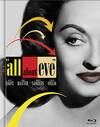





The Pride of the Yankees (1942)
Cast | Crew | Awards | Articles | Bibliography | Downloads | Links | Image Credits
| Article 1 |
‘Pride of the Yankees,' a Film Biography of Lou Gehrig, With Gary Cooper and Teresa Wright, on View at Astorby Bosley CrowtherThe New York Times, July 16, 1942 page 23So many hundreds of persons loved Lou Gehrig with a devotion that few men know and literally thousands of others held him in such true regard that the film biographers of the modest and valiant ball player assumed an obligation too ticklish for casual approach. But no one can say that Samuel Goldwyn has not been respectful of its due. In a simple, tender, meticulous and explicitly narrative film, Mr. Goldwyn and his associates have told the story of Buster Lou with sincere and lingering affection, in face of which dramatic punch has been subdued. It is called "The Pride of the Yankees," and it opened at the Astor last night -- and also, for a single performance, in forty neighborhood theatres hereabout. For months Mr. Goldwyn had seen to it that the word generally got around that this was not to be so much the story of Lou Gehrig, the great ball player, as of Lou Gehrig, a fine and humble man. That advice was absolutely on the level. For "The Pride of the Yankees" is primary a review of the life of a shy and earnest young fellow who loved his mother, worked hard to get ahead, incidentally became a ball player for two reasons -- because he loved the game and also needed the cash -- enjoyed a clumsy romance which eventually enriched his life and then, at the height of his glory, was touched by the finger of death. It is, without being pretentious, a real saga of American life -- homely, humorous, sentimental and composed in patient detail. But by the very nature of its subject, it lacks conflict till well on toward its end. And that is its principal weakness as a dramatic film. For the youth and early manhood of Lou Gehrig, according to this account, were picturesque without begin too difficult, beset by shyness more than anything else. And the same was true of his ripe years and his romance -- at least, in this film. It is not until illness leads the "Iron Man" into the valley of the shadow that this story of this life becomes dramatic. Illness and death are the only adversaries faced by Lou. In view of the fact that a good three-quarters of this more than two-hour-long film is devoted to genial details, it inclines to monotony. This is further aggravated by the fact that the details are repetitious in themselves. Lou shows his mother he loves her, not once but many times, and his coy and playful frisking with his wife becomes redundant after awhile. Furthermore, sports fans will protest, with reason on their side, that a picture about a baseball player should have a little more baseball in it. Quite true, this one has considerable footage showing stands and diamonds of the American League, with Lou at bat, running bases and playing the initial bag. What is shown is accurate. But it is only shown in glimpses or montage sequences, without catching much of the flavor or tingling excitement of a tight baseball game. Fans like to know what's the inning, how many are on, and how many out. At least, the score. This underemphasis of Gehrig's profession is partially excused by the fact that Gary Cooper, who plays the great hero, doesn't look too good slamming or scooping ‘em up. Mr. Cooper is perfectly able when it comes to playing the diffident, homes-spun man, and his performance in the touching final sequence -- the presentation of the Gehrig tribute -- is excellent. He even bears a slight resemblance to the "Iron Man," especially about the eyes. But when he's in there snagging the hot ones, he isn't likely to be mistaken for the real Lou. The cast is superb, however, and does handsomely under Sam Wood's direction. Elsa Janssen and Ludwig Stossel are delightful humans as Ma and Pop Gehrig, and Teresa Wright has a lovely, gracious quality as Mrs. Lou. Walter Brennan, Dan Duryea, and Ernie Adams are a credit to Hollywood in lesser roles, and Babe Ruth -- the real old Babe -- roars and wrangles titanically in a couple of scenes playing himself. A few other old-time Yankees -- Bill Dickey, Mark Koenig and Bob Meusel -- are in the background as local scenery, and Dickey even gets a chance to slug a guy. As a baseball picture -- in which Veloz and Yolanda, for some reason, dance -- "The Pride of the Yankees" is not anything to raise the blood-pressure. But as a simple, moving story with an ironic heart-tug at the end, it serves as a fitting memorial to the real Lou, who called himself the "luckiest man alive." Preceding the feature on the program -- and made at Mr. Goldwyn's request -- is a deliciously confused Disney cartoon, a goofy burlesque called "How to Play Baseball." © 1942 The New York Times |
|
Article 1 |
Article
2 |
| Now in Print! |
|---|
| Now on DVD! |
|---|
Buy Videos & DVDs |
|
Buy Movie Posters |
|
Buy Movie Posters |
|
Classic
Movie Merchandise |
|
![]() Printer-friendly version.
Printer-friendly version.
![]() Return
to the top.
Return
to the top.
Last updated:
March 10, 2011.
Reel Classics is a registered trademark of Reel Classics, L.L.C.
© 1997-2011 Reel Classics, L.L.C. All rights reserved. No
copyright is claimed on non-original or licensed material.
Terms of
Use.









